Rosettenville is a working class suburb of Johannesburg, South Africa. It lies to the south of the city centre.

Glenhazel is a suburb of Johannesburg, South Africa. It is located in Region E, bordering Fairmount, Sandringham, Lyndhurst and Percelia Estate. The area lies on a sloping hill with a park in the valley. It is known for its large Jewish population as well as for being home to the largest Jewish kosher hub in Johannesburg, which attracts many Jewish tourists.

Vredehoek is a residential suburb of Cape Town, South Africa, located at the foot of Table Mountain and Devil's Peak. It is sandwiched between the two neighbouring suburbs of Oranjezicht and Devil's Peak Estate, the latter of which is often considered a sub-suburb of Vredehoek as they both fall under the neighbourhood watch community called DPV - Devil's Peak & Vredehoek.
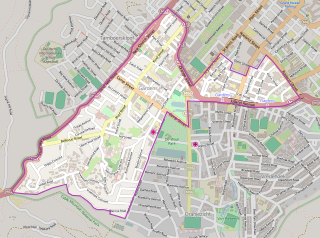
Gardens is an affluent inner-city suburb of Cape Town located just to the south of the city centre located in the higher elevations of the "City Bowl" and directly beneath Table Mountain and Lion's Head. It is home to several national museums such as Iziko South African National Gallery and the Iziko South African Museum. The University of Cape Town also houses its Fine Arts department in the suburb, at Michaelis School of Fine Art. Company's Garden, South Africa's oldest garden, a public park and heritage site is a focal point of the suburb. The area is also home to the oldest synagogue in Southern Africa, the Old Shul and its successor, the Gardens Shul, "The Mother Synagogue of South Africa."
Ohr Somayach in South Africa is an affiliate of Ohr Somayach, Jerusalem, a network of Haredi yeshivas and Synagogues. Like its parent institution, it focuses on educating baal teshuvas. It has branches in Johannesburg and Cape Town.

The Gardens Shul, formally, the Cape Town Hebrew Congregation (CTHC) is a Modern Orthodox synagogue located in the Company Gardens, in the Gardens neighborhood of Cape Town. It has the oldest Jewish congregation in South Africa, dating to 1841. The congregation, known as "The Mother Synagogue of South Africa," possesses two historic structures, the 1863 synagogue known as the Old Shul and the 1905 synagogue. The South African Jewish Museum, located in its grounds, also occupies the Old Shul and is responsible for its upkeep. The 1905 building is an example of Edwardian architecture and has been called "one of the most magnificent synagogues in the world."
The Oxford Shul is an Orthodox synagogue in Riviera, Johannesburg near the suburbs of Saxonwold, Houghton and Killarney. The congregation was established in 1943 and moved into its current building in 1962. The sanctuary is one of the largest in the Southern Hemisphere, with seating for 1,500 congregants.
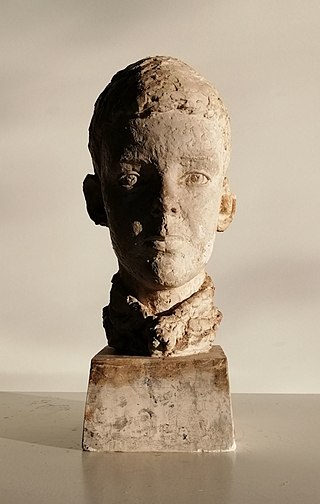
Moses Kottler (1896–1977) was a South African painter and sculptor. He is widely regarded, along with Anton van Wouw and Lippy Lipshitz, as one of the most important South African sculptors. This triumvirate had the distinction of also having excelled at using pictorial media; Lipshitz with monotypes and Van Wouw in painting and drawing. Kottler's work in oils earned him additional consideration as a painter.
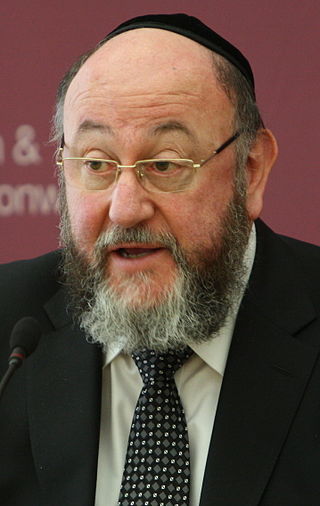
Sir Ephraim Yitzchak Mirvis is an Orthodox rabbi who serves as the Chief Rabbi of the United Hebrew Congregations of the Commonwealth. He served as the Chief Rabbi of Ireland between 1985 and 1992.

The Cape Town Holocaust & Genocide Centre began as Africa's first Holocaust centre founded in 1999. It has sister Centres in Johannesburg and Durban, and together they form part of the association, the South African Holocaust & Genocide Foundation (SAHGF). The SAHGF determines the educational and philosophical direction of the centre. It also conducts teacher training and is the only accredited service-provider for in-service training in Holocaust education in the country. It has trained over 5,000 teachers

The Chassidim Shul also known as the Chabad House is a synagogue in Yeoville, Johannesburg, South Africa built in 1963 and designed by the firm of Morgensten & Morgensten, the husband and wife team of Jacques Morgenstern and Riva Morgenstern. They met at the University of the Witwatersrand in the Department of Architecture in the 1940s and ran a successful and award-winning architectural practice in Johannesburg.
Rabbi Barry Marcus is a South African rabbi. He retired as senior minister of Central Synagogue, Great Portland Street in London in 2018 after serving the congregation for over 23 years. He is notable for his rabbinical and pastoral duties in the UK, Israel and South Africa.
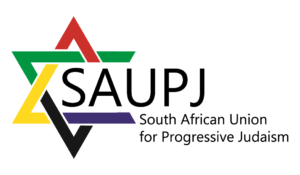
The South African Union for Progressive Judaism (SAUPJ) is an affiliate of the World Union for Progressive Judaism and supports 11 progressive congregations. Rabbi Moses Cyrus Weiler, a founder of Reform Judaism in the country, led the country's first Reform synagogue, Temple Israel in Hillbrow, Johannesburg. Weiler is credited with growing the movement, to represent 15-17% of South African Jewry and establishing 25 congregations in the country. A 2020 joint study by the Institute for Jewish Policy Research and the University of Cape Town showed that 12% of Jews identified as Progressive and that in relative terms the progressive strands are increasing after falling to 7% in 1998 and 2005 studies. In Johannesburg, the community accounts for 7% of the city's Jewry, rising to 18% in Cape Town and 25% in Durban.
Temple Israel, also known as the Cape Town Progressive Jewish Congregation (CTPJC), is a Progressive Jewish congregation in Cape Town, with three centres in Green Point, Wynberg and Milnerton. As three centres combined, they are the largest Progressive congregation in South Africa, and the second largest Jewish congregation in Cape Town after Marais Road Shul in Sea Point. The congregation first started in Green Point in 1944, eight years after South Africa's first progressive synagogue, also Temple Israel, opened in Hillbrow in Johannesburg. The Cape Town congregation caters to over 3000 Progressive Jews in the city. The congregation is an affiliate of the South African Union for Progressive Judaism, which is part of the World Union for Progressive Judaism (WUPJ). The congregation represents around 18% of Cape Town Jewry.
Moses Cyrus Weiler was a Latvian-born South African rabbi and founder of Reform Judaism in the country. He was Chief Minister of the United Jewish Progressive Congregation and served as rabbi of Temple Israel in Hillbrow, Johannesburg, the mother synagogue of the country's Reform movement. He is credited with growing the movement, with 25 congregations established during his tenure. He made aliyah to Israel in 1958, where he spent the second part of his life.
Rabbi Dr David Sherman was a South African and American rabbi. He was the first spiritual leader of a Reform congregation in Cape Town, where he led Temple Israel in Green Point.

The South African Jewish Museum is a museum of South African Jewish life, history and identity. The museum is situated in the downtown neighbourhood of Gardens in Cape Town. It is located in the grounds of Gardens Shul, and is in the same complex as the Cape Town Holocaust & Genocide Centre and the Gardens Jewish Community Centre. It is also close to the Iziko South African National Gallery and Houses of Parliament. The museum was founded by the late philanthropist, Mendel Kaplan. It documents the community's historical roots in Lithuania and elsewhere. Thereon it documents the role of South African Jewry in South African society and their contributions to a number of diverse fields.
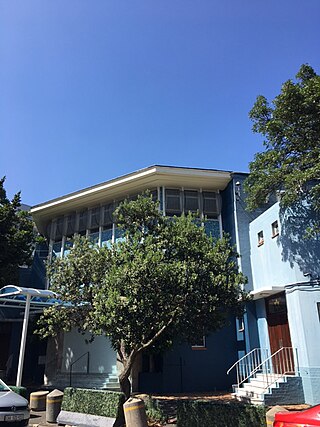
The Marais Road Shul, formally, the Green & Sea Point Hebrew Congregation (G&SPHC) is a notable Modern Orthodox synagogue in Sea Point, a seaside suburb of Cape Town. The congregation was first established in 1926, and the synagogue was completed in 1934. It had initially intended to become a branch of the Gardens Shul in the City Bowl, but opted for independence, and became the larger of the two. It is the largest Jewish congregation in South Africa, and by 1994, it had become the largest in the South Hemisphere. The Sephardi Hebrew Congregation, established in 1960, also operates a shul from the G&SPHC's Weizmann Hall on Regent Road in Sea Point.
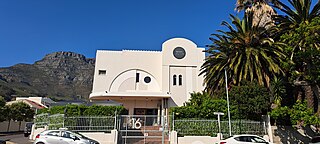
The Vredehoek Shul, formally the Cape Town Hebrew Congregation, was a Modern Orthodox synagogue in Vredehoek in Cape Town. It was established in 1939 and closed in 1993. It was one of a number of synagogues in the City Bowl, along with the country's oldest synagogue, the Gardens Shul in Gardens. The Art Deco building is a protected South African Heritage Resources Agency site and currently operates as Private Collection, an antique furniture showroom.












